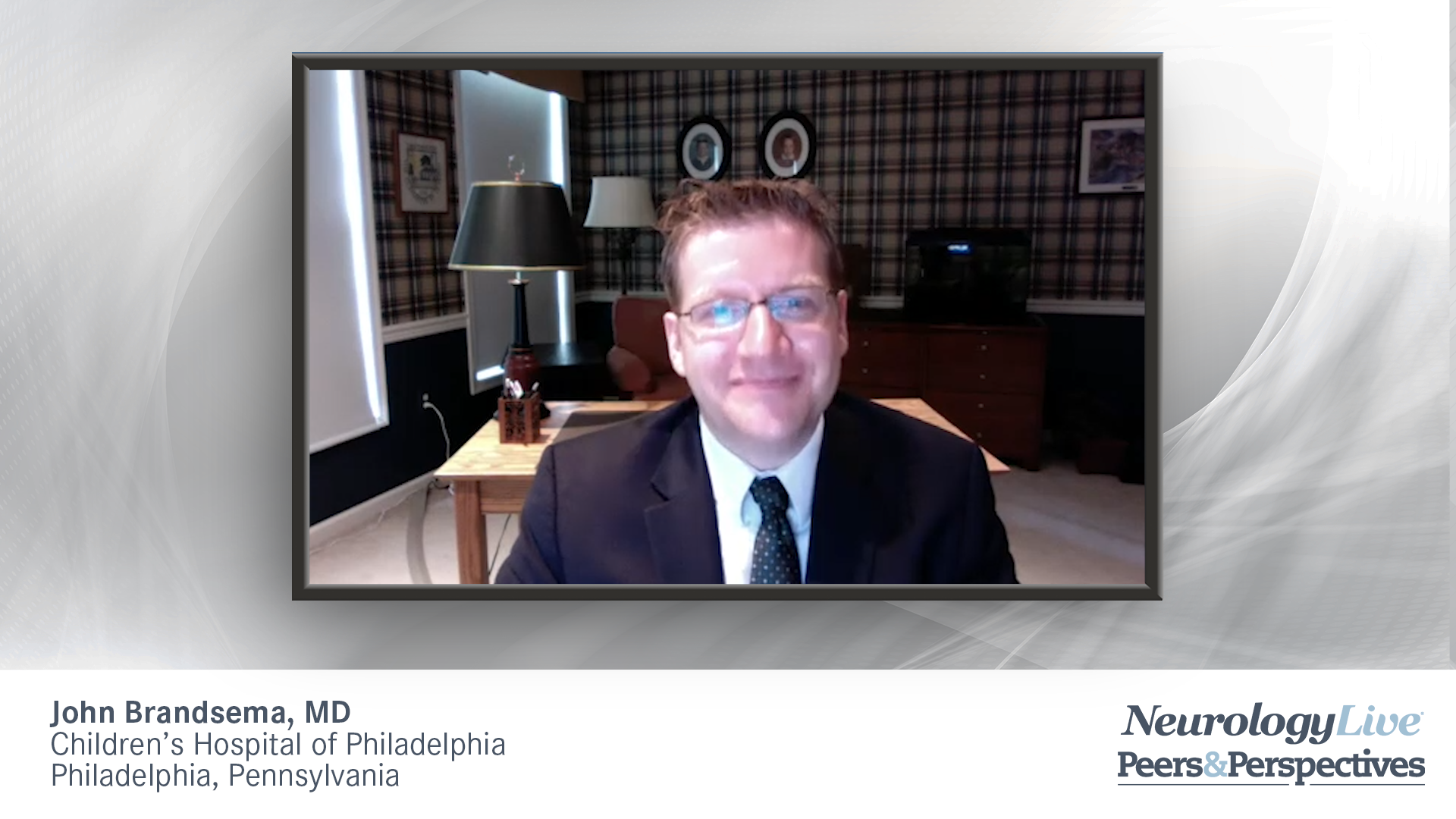
Early Detection and Screening of Spinal Muscular Atrophy

Identifying spinal muscular atrophy through early diagnosis using prenatal and newborn screenings is discussed.
John Brandsema, MD: I think one thing we are all working really hard on, as a community and with our various primary care collaborators as well, is making sure we make this diagnosis as early as possible for anybody affected. One thing that has been relatively new in this area is newborn screening and prenatal carrier screening for parents. We are able to identify people even prenatally with this disease. I think there are some nuances to that process that are important to understand, that the genetic issue for everybody with SMA [spinal muscular atrophy] is having a survival motor neuron, or SMN, deficiency, and it is usually caused by having a nonfunctional SMN1 gene. The timing of when you, as a patient, are going to present with symptoms does depend on your SMN2 copy number, as Julie alluded to earlier. One thing that is important to understand about this process, though, is that with autosomal recessive inheritance, if we are testing parents as carriers in the prenatal phase, we usually will identify both the mother and the father as being a carrier of SMA. They would not be expected to have symptoms, but would have a 1-in-4 chance of having an affected child. There is an exception to that, where some people will have 2 copies of SMN1 on 1 allele and 0 on the other. They are still able to give that 0-copy allele to a child and have the same 1-in-4 chance, but the screening test we do detects both copies of the SMN1 on that other allele and says that they are not a carrier.
It is very important when you are doing this prenatal screening that that is understood by parents—that they are potentially still able to have a child with SMA, even if they have been told they are not a carrier for this disease. The other exception is if the problem is not a deletion in their SMN1 gene, but rather a point mutation or an inversion or something else that is making the SMN1 gene nonfunctional. They can still pass that along as a 1-in-4 chance to their child. Again, that screening test is not going to pick them up, and that represents only about 5% of people with SMA. Perhaps that goes up to about 10% if you add the silent carrier aspect to it, but it is an important thing to recognize about the prenatal screening process. Then we get into newborn screening, which again looks for that deletion, so you still have that 5% of the SMA population that is not going to be picked up with newborn screening. I am wondering, Julie, you have had newborn screening active in Colorado for a period of time. We certainly have that in Pennsylvania as well. How has this been changing your approach to establishing the diagnosis and what treatment options you are considering with families when they are referred to your clinic?
Julie Parsons, MD: Colorado is very interesting—Colorado and Wyoming—as all of the babies that are born in both of these states come to our center. It is a bit of a different system than I think it is in other states, where they might have multiple centers. The system we have designed is that, within 24 hours of identifying a baby who is positive, we bring that patient and family in to be able to discuss the disorder and provide information about the various treatments available for that family. It has worked amazingly well in terms of having access to the patients, particularly because we are able to treat them when they are presymptomatic, in general, which gives them an opportunity for better outcomes.
Part of the issue is, however, as you said John, that this is an autosomal recessive disorder, so parents have no idea, in general, that they are carriers. They have a perfectly beautiful, healthy baby, who we are telling them has a genetic disorder that can be lethal if it is not treated, and they are just in the postpartum period. They are exhausted. They have just had this baby. There are some real issues, I think, in terms of discussing the disorder and the treatment options to be able to treat the patients within a very short period. Our goal is to treat the babies within 21 days of identification and have a good system in place to be able to do that. I think, in terms of newborn screening, it is fantastic that we are able to identify patients in our 2 states where we are lucky enough to have newborn screening. What we have to remember, as you said, is that there are about 5% of patients who we will not pick up. And we have other states in the United States that do not have newborn screening, so we still have to be vigilant and astute about when we suspect spinal muscular atrophy as a diagnosis. We need to be very aggressive about making that diagnosis so we can institute early treatment.
John Brandsema, MD: I think that has been one of the challenges, certainly in our area of the country. There are so many smaller states close to each other that we will often see people referred in from states where they have not had newborn screening in place, even though we have newborn screening. Part of it is understanding the timeline. The literature is also very clear that there is a diagnostic delay in people who are symptomatic with SMA. It’s usually a few months for the patients with very severe, early onset disease. When you think about treating patients with the mildest form—patients who have walked already for a period in their life before they start to progress with weakness—that can be up to 2 or 3 years before the SMA diagnosis is established. It is very clear, across all of the research studies, that the earlier the intervention, the better, because the problem with this disease is that motor neurons are dying and being lost, and once they’re gone, you cannot recover them. We need to protect these motor neurons and save the pool, so that we are able to get ahead of it as much as possible.
Thank you to the audience for watching this NeurologyLive® Peers & Perspectives®. If you enjoyed this content, please subscribe to our e-newsletters to receive upcoming programs and other great content right in your inbox. Thanks for watching and have a great day.
Transcript Edited for Clarity
Newsletter
Keep your finger on the pulse of neurology—subscribe to NeurologyLive for expert interviews, new data, and breakthrough treatment updates.































